How to Run Command Prompt Commands from a Windows Shortcut
Method 1 of 2:
Creating a Desktop Shortcut
-
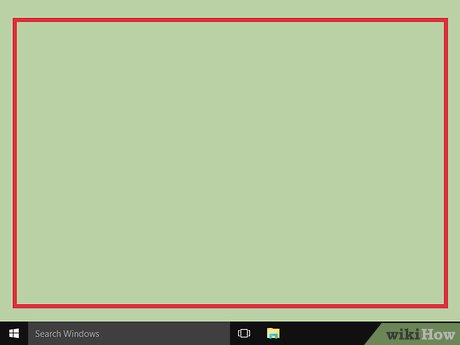 Right-click a blank area of the desktop.[1]
Right-click a blank area of the desktop.[1] -
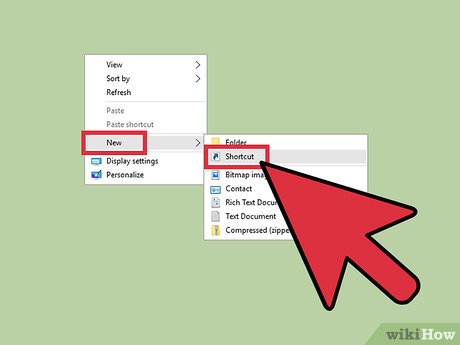 Click Shortcut.
Click Shortcut. -
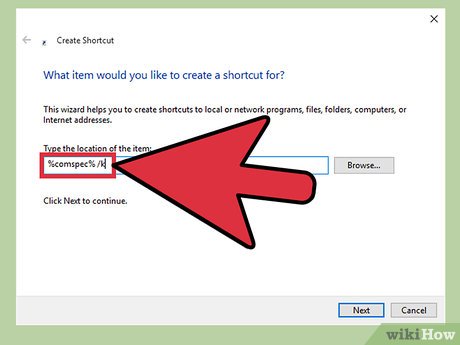 Type %comspec% /k into the text box.
Type %comspec% /k into the text box.- The -k flag keeps the command prompt window open after the command is run. You can remove the flag if you prefer the window closes right away.
-
 Press the spacebar.
Press the spacebar. -
 Type the command you want to run. Whatever command you type after %comspec% /k is the one that will run when you double-click this shortcut. For example:[2]
Type the command you want to run. Whatever command you type after %comspec% /k is the one that will run when you double-click this shortcut. For example:[2]- %comspec% /k ping www.google.com will ping www.google.com when you double-click the shortcut.
- %comspec% /k sfc scannow will scan all protected system files when you double-click the shortcut.
-
 Click Next.
Click Next. -
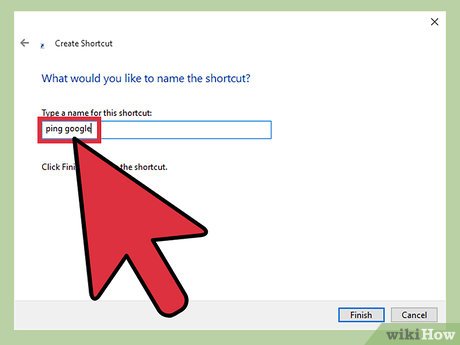 Enter a name for the shortcut. This is the text that will appear under the icon.
Enter a name for the shortcut. This is the text that will appear under the icon.- For example, if the shortcut pings Google, you could type ping google.
-
 Click Finish. The shortcut is now on your desktop.
Click Finish. The shortcut is now on your desktop. -
 Double-click the shortcut to run the command. The command prompt window will appear, and you'll see your command running.
Double-click the shortcut to run the command. The command prompt window will appear, and you'll see your command running.
Method 2 of 2:
Creating a Keyboard Shortcut
-
 Create a desktop shortcut for the command. A keyboard shortcut is a combination of keyboard keys you press to run a command or program. To create one for a command line command, make sure you've already created a desktop shortcut.[3]
Create a desktop shortcut for the command. A keyboard shortcut is a combination of keyboard keys you press to run a command or program. To create one for a command line command, make sure you've already created a desktop shortcut.[3]- Keyboard shortcuts will follow the format Ctrl+Alt+[other key].
- You'll be able to choose a letter, number, or punctuation key as the 'other key.' For example, b, ., 3.
-
 Right-click the desktop shortcut.
Right-click the desktop shortcut. -
 Click Properties. The 'Shortcut' tab of the Properties screen will appear.
Click Properties. The 'Shortcut' tab of the Properties screen will appear. -
 Click into the 'Shortcut Key' box.
Click into the 'Shortcut Key' box. -
 Press a letter, number, or punctuation key. The text box will fill with the entire shortcut using the key you press.
Press a letter, number, or punctuation key. The text box will fill with the entire shortcut using the key you press.- For example, if you press p, the text in the box will change to Ctrl + Alt + P.
- If you create multiple keyboard shortcuts, make sure not to use the same key twice.[4]
-
 Click OK. You'll now return to the desktop.
Click OK. You'll now return to the desktop. -
 Press Ctrl+Alt+[other key] to run the command. The command prompt window will appear, running the command you set up in the desktop shortcut.
Press Ctrl+Alt+[other key] to run the command. The command prompt window will appear, running the command you set up in the desktop shortcut.
4.3 ★ | 4 Vote
You should read it
- How to create VPN shortcut on Windows 10 desktop
- How to change the default shortcut in Windows 10
- How to Set a Keyboard Shortcut to Open Spotlight
- The shortcut virus removal has never been this simple
- How to Put a Shortcut to a Website on Your Desktop
- How to Create Desktop Shortcuts for Office Programs on PC or Mac
- How to use the command history function in Command Prompt
- How to Make the Show Desktop Icon in Windows Quick Launch Toolbar
May be interested
- How to Open Folders in CMD
 do you need to access something from the command prompt or the windows command prompt? although it looks classic, this program is really easy to use if you know some basic commands. today's tipsmake will show you how to use the 'cd' command to open a folder in windows command prompt. besides, you will also know more great tips to instantly open command prompt in any folder on windows file explorer.
do you need to access something from the command prompt or the windows command prompt? although it looks classic, this program is really easy to use if you know some basic commands. today's tipsmake will show you how to use the 'cd' command to open a folder in windows command prompt. besides, you will also know more great tips to instantly open command prompt in any folder on windows file explorer. - How to Change Directory in Command Prompt
 this article shows you how to change folders in the command prompt program on a windows computer. to change commands in command prompt, you must use an administrator account.
this article shows you how to change folders in the command prompt program on a windows computer. to change commands in command prompt, you must use an administrator account. - How to run multiple commands at once in CMD
 command prompt is useful software for you to perform special tasks in windows. during use, there will be times when you need to run many commands simultaneously.
command prompt is useful software for you to perform special tasks in windows. during use, there will be times when you need to run many commands simultaneously. - How to open Command Prompt during Windows installation
 opening command prompt while you install windows will help you use commands in cmd such as checking drive health, converting standard mbr - gpt and many other benefits,
opening command prompt while you install windows will help you use commands in cmd such as checking drive health, converting standard mbr - gpt and many other benefits, - Summary of the common Run CMD commands
 instead of performing manual and direct access operations on windows, we can replace existing cmd commands for faster access.
instead of performing manual and direct access operations on windows, we can replace existing cmd commands for faster access. - How to use Xcopy command in Command Prompt
 knowing how to use xcopy command in command prompt, you will easily use commands in cmd professionally. in particular, the xcopy command is extremely useful for those who copy and copy data on the computer.
knowing how to use xcopy command in command prompt, you will easily use commands in cmd professionally. in particular, the xcopy command is extremely useful for those who copy and copy data on the computer. - How to Add an 'Open Command Prompt Here As Administrator' Shortcut to the Context Menu in Windows 7 and Windows Vista
 in windows vista and windows 7, when you want to open a command prompt starting with a certain path, this can be a tedious process and sometimes you'll notice that some programs won't run from the command prompt at all, because they...
in windows vista and windows 7, when you want to open a command prompt starting with a certain path, this can be a tedious process and sometimes you'll notice that some programs won't run from the command prompt at all, because they... - Add Command Prompt to Power User Menu on Windows 10
 on windows 10 build 14971, microsoft replaced command prompt and command prompt (admin) with windows powershell. according to microsoft, this change will bring the best command line experience to users. but in fact, users prefer to use command prompt rather than using powershell.
on windows 10 build 14971, microsoft replaced command prompt and command prompt (admin) with windows powershell. according to microsoft, this change will bring the best command line experience to users. but in fact, users prefer to use command prompt rather than using powershell. - Combine all the most basic AutoCAD commands
 using autocad shortcut commands helps to manipulate faster. if you do not know all the cad commands, please see the summary of autocad commands that we have done below.
using autocad shortcut commands helps to manipulate faster. if you do not know all the cad commands, please see the summary of autocad commands that we have done below. - Instructions for using Command Prompt
 deep in windows is a command-line world that is obscure. in this article, we will show you how to solve errors and make your computer more secure.
deep in windows is a command-line world that is obscure. in this article, we will show you how to solve errors and make your computer more secure.
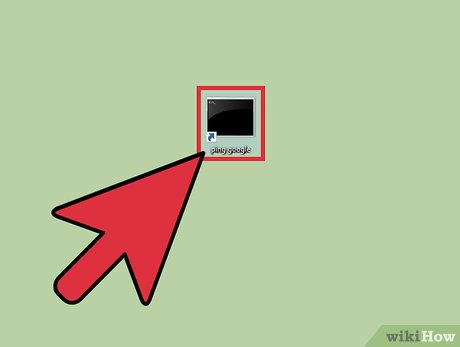

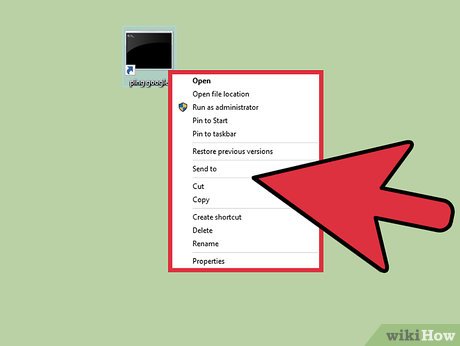

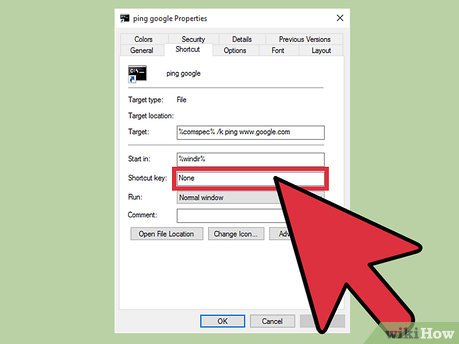













 How to Use CMD (Beginner)
How to Use CMD (Beginner) How to Open Command Prompt with a Keyboard Shortcut (Windows 8, 8.1, and 10)
How to Open Command Prompt with a Keyboard Shortcut (Windows 8, 8.1, and 10) How to Add New Options to Right Click Menu in Windows
How to Add New Options to Right Click Menu in Windows How to Unblock Command Prompt Anywhere
How to Unblock Command Prompt Anywhere How to Hide a File in an Image File
How to Hide a File in an Image File How to Fix Full Screen Command Prompt
How to Fix Full Screen Command Prompt